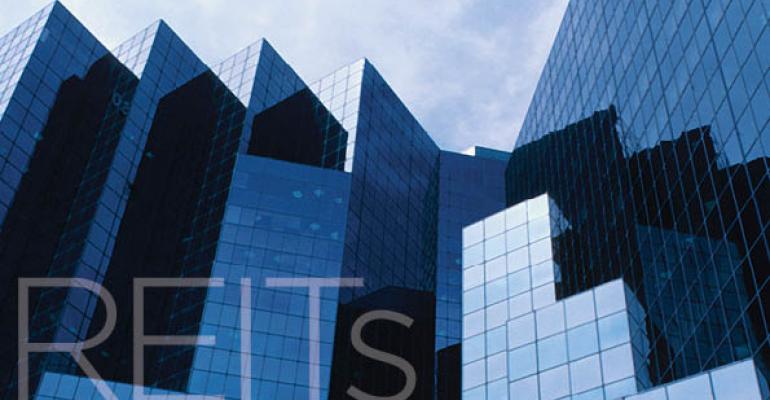As the publicly-traded REIT sector continues to go through a wave of consolidation, new additions to the traditional REIT ranks are cropping up. On Jan. 13, diversified private owner Forest City Enterprises revealed it would seek REIT status, aiming to start trading in January 2016. Among the main reasons for the move, company executives cited the tax benefits. According to Bloomberg:
“Becoming a REIT is a logical step that will allow us to maintain a tax-efficient structure to continue to drive shareholder value, while also instituting a regular quarterly dividend to shareholders,” Chief Financial Officer Robert G. O’Brien said in the statement.
REITs have had a strong run in the past few years, as commercial real estate became increasingly more attractive to high net worth investors and institutional investors alike, but may Forest City be a bit late to the party? REIT.com, a site run by the National Association of Real Estate Investment Trusts (NAREIT), predicts that overall REIT performance in 2015 will be strong, but will fall short of 2014’s levels.
“While analysts anticipate continued buoyancy for the REIT market in 2015, some also expressed unease with the current level of REIT share prices. Additionally, even though interest rates should remain relatively low, valuations could exacerbate the negative impact of an interest rate hike on the REIT market,” the site warns.
In 2014, the publicly-traded REIT sector welcomed six new participants, compared to 13 the year before, according to a recent report from Charlottesville, Va.-based research firm SNL Financial. Of those six, only two—Paramount Group and STORE Capital Corp.—outperformed the SNL U.S. REIT Equity Index. Paramount Group operates office buildings in New York, Washington, D.C. and San Francisco. STORE Capital specializes in net lease properties.
Looking at 2015, SNL researchers view office and multifamily REITs as overweight and regional mall REITs as underweight.
At the moment, the REITs that show the greatest yields by specialization include mortgage REITs, residential REITs, retail REITs, diversified REITs and office REITs, according to Seeking Alpha. Forest City would fit nicely into that group as the company owns office, retail and multifamily assets in primary markets such as New York, San Francisco, Boston, Washington, D.C. and Los Angeles. Some of its crown jewels include the Renzo Piano-designed New York Times Building in midtown Manhattan, the 1.46-million-sq.-ft. Westfield San Francisco Centre in San Francisco, which it owns in partnership with the Westfield Group, and the Barclays Center in Brooklyn, N.Y. The company’s entire portfolio is valued at $8.9 billion.
Several media outlets noted the almost concurrent timing of Forest City’s REIT conversion announcement and plans by Barclays Center co-owner Mikhail Prokhorov to sell his stake in the center and the Nets team. According to Bloomberg:
“Galatioto declined to put a price tag on the team, which valuations expert Peter Schwartz said is worth about $1.3 billion. The arena is worth even more, said Schwartz, a managing director at Boston-based Christie & Associates, adding that the commodity tycoon’s combined stake is worth about $2 billion.”
Forest City recently started moving away from development activity, concentrating on existing properties, specifically core multifamily, office and retail. Company executives made clear they will stick with this strategy as the REIT conversion gets underway.

